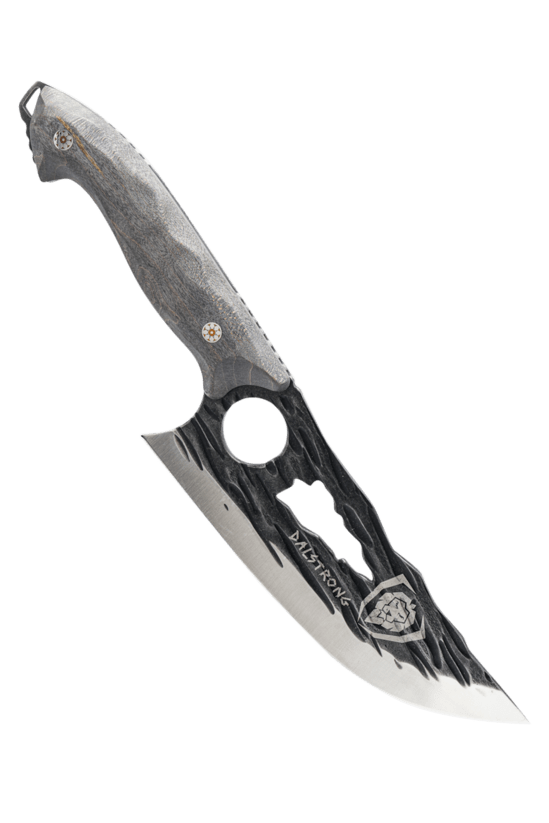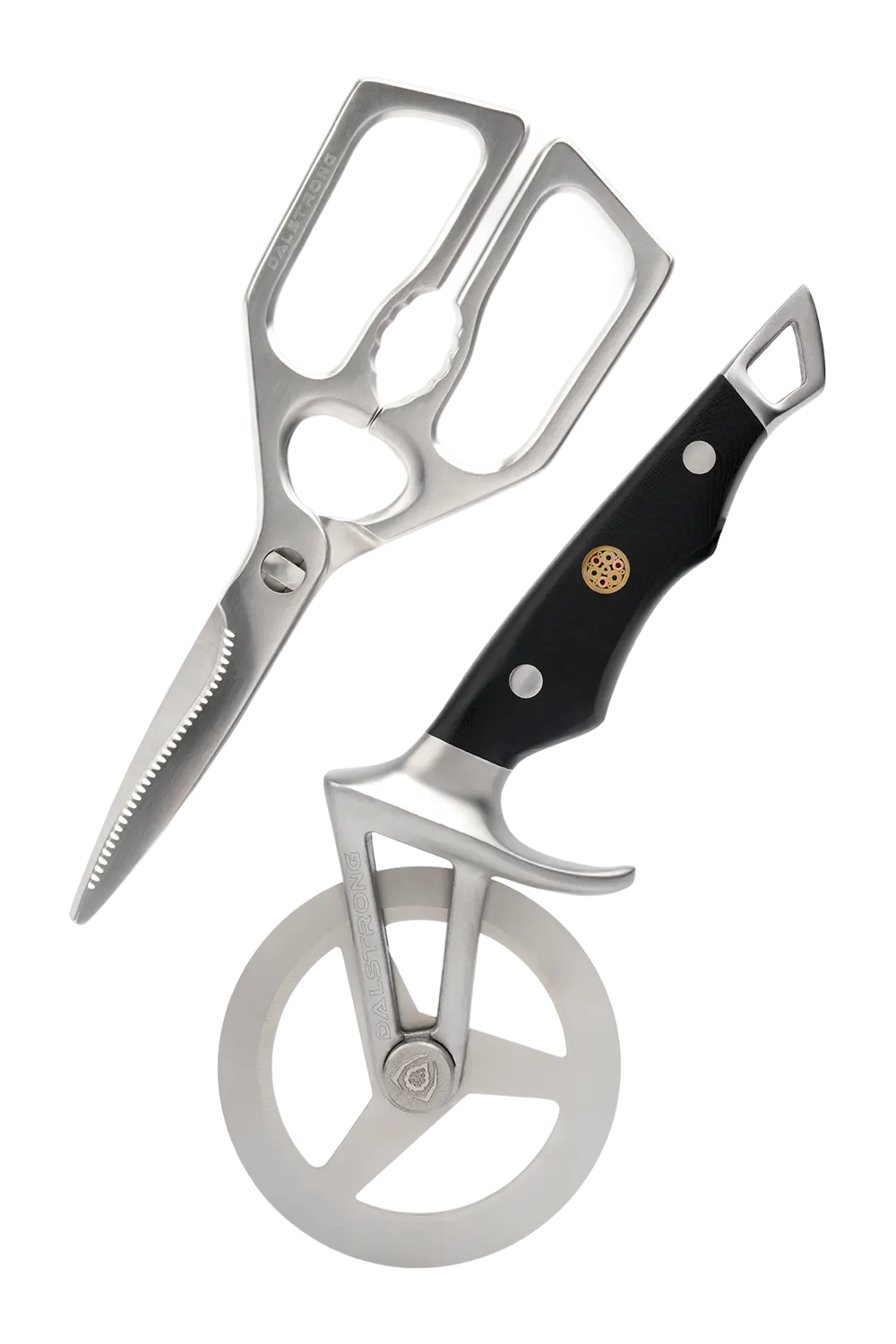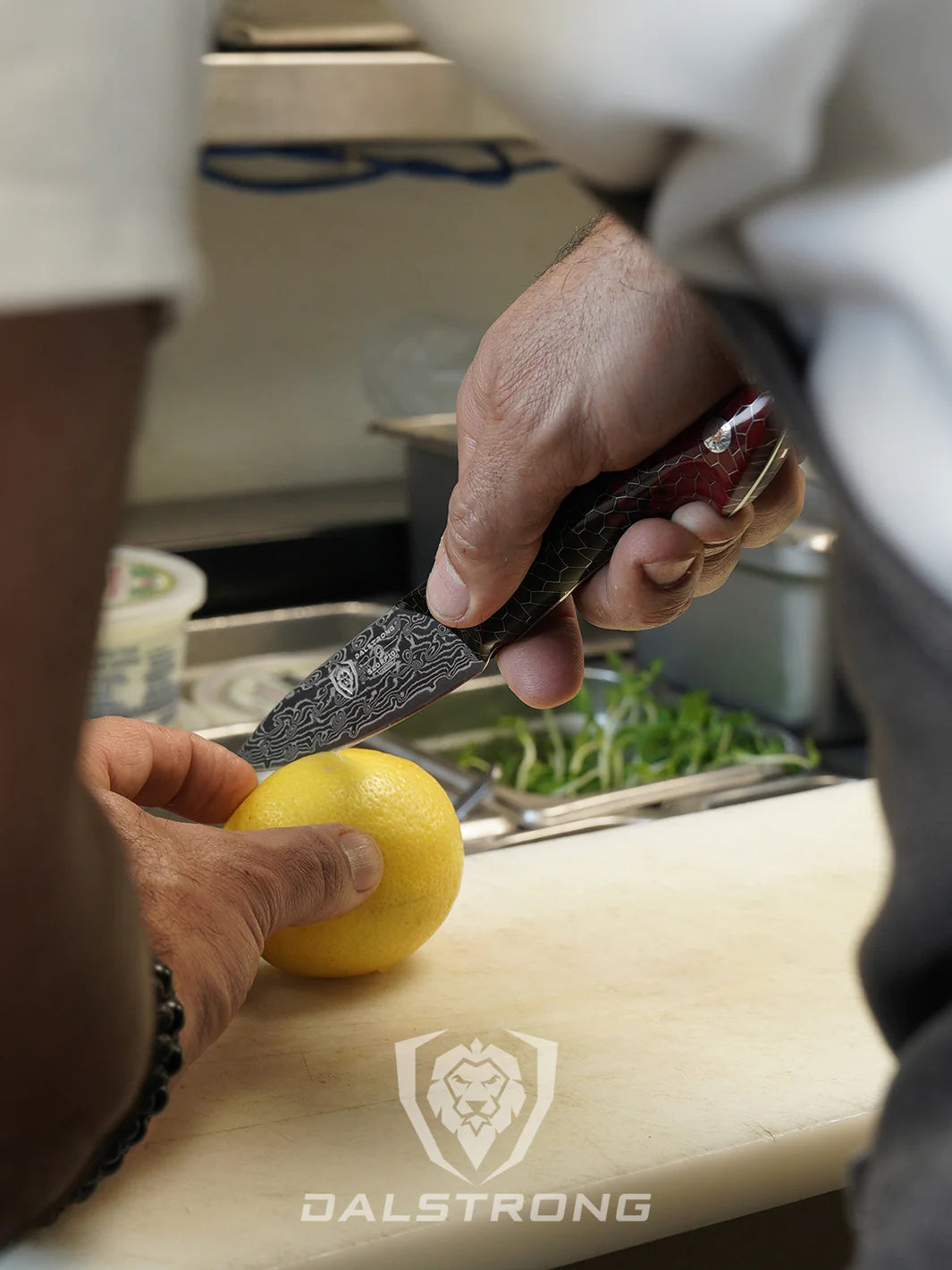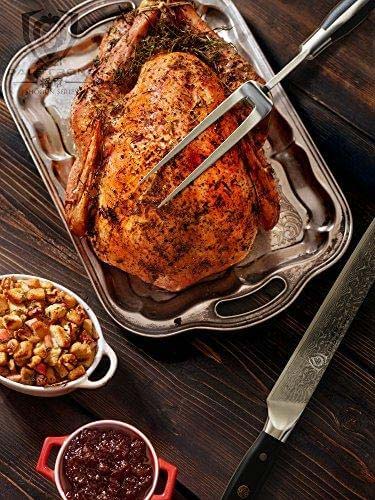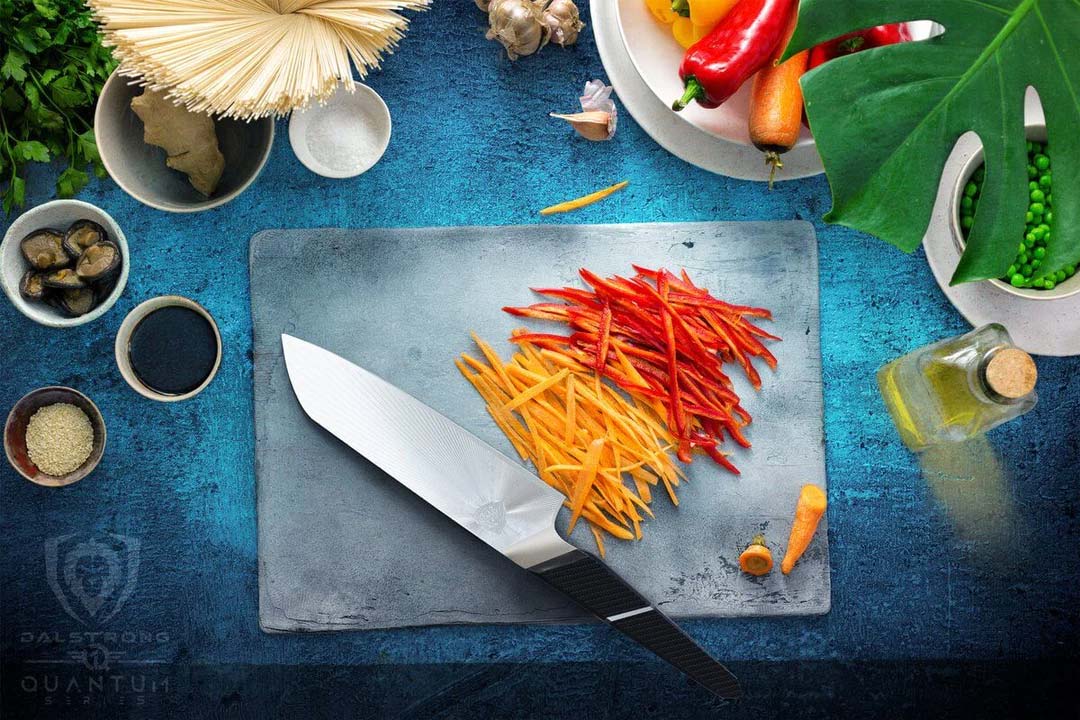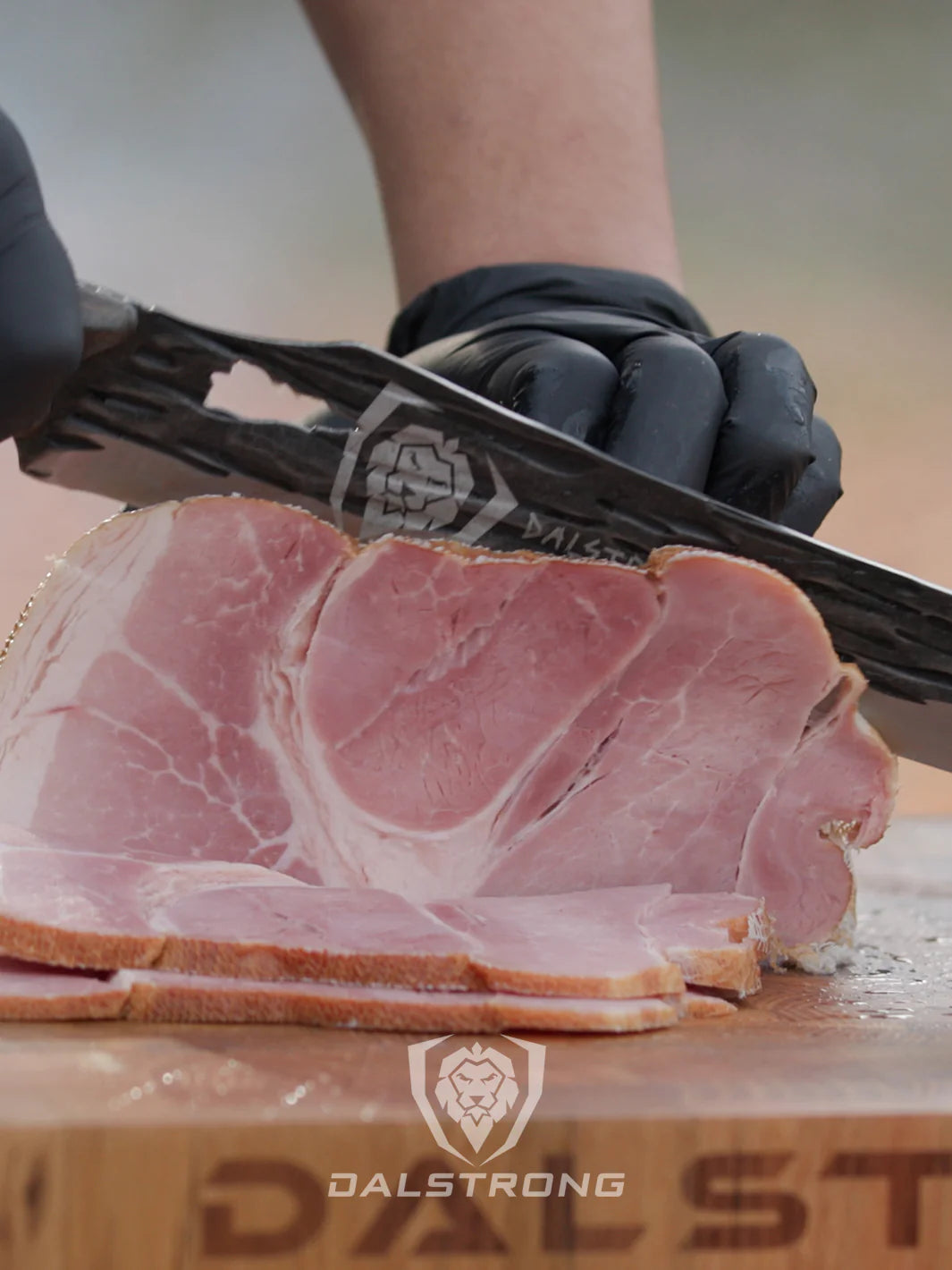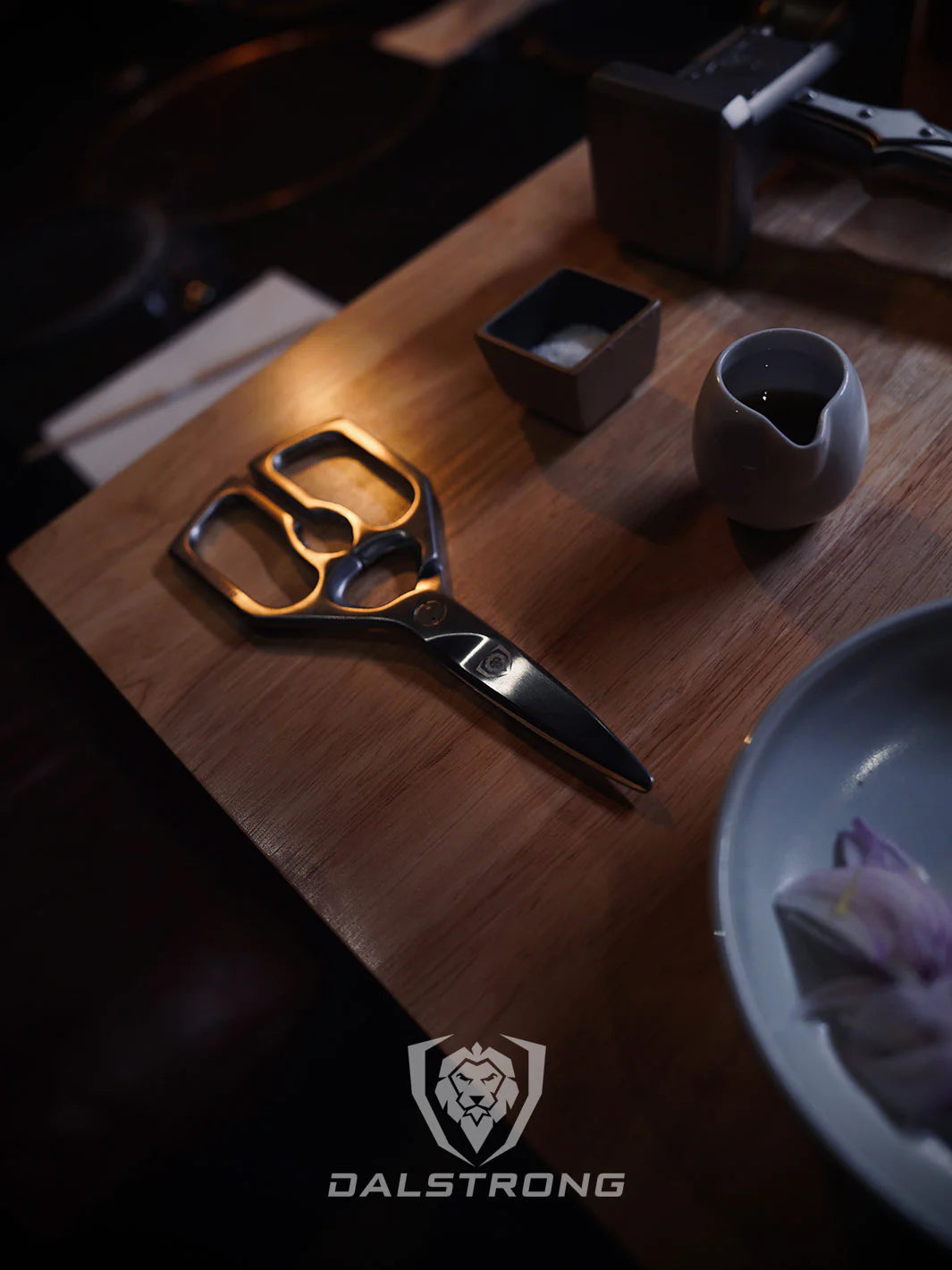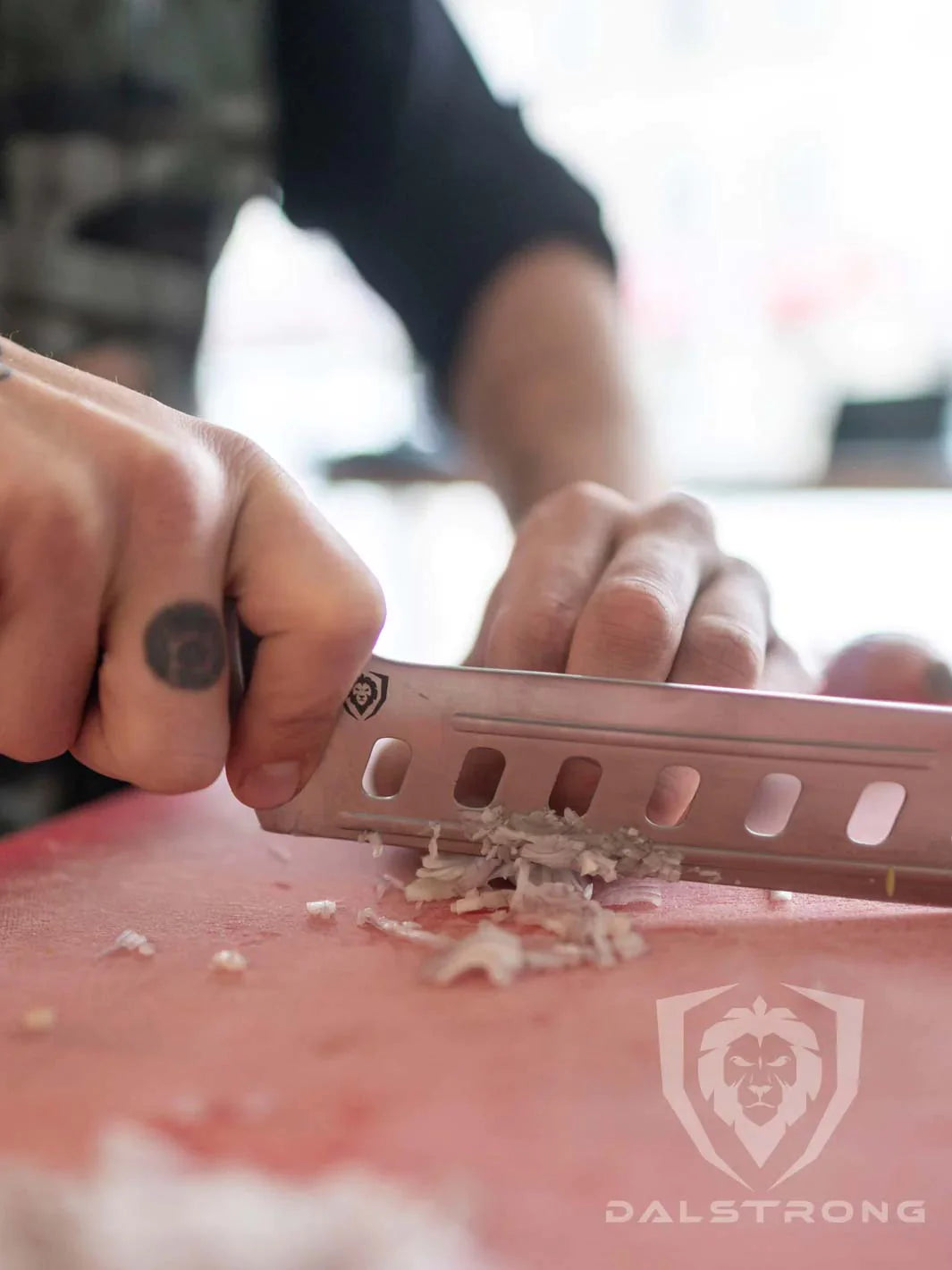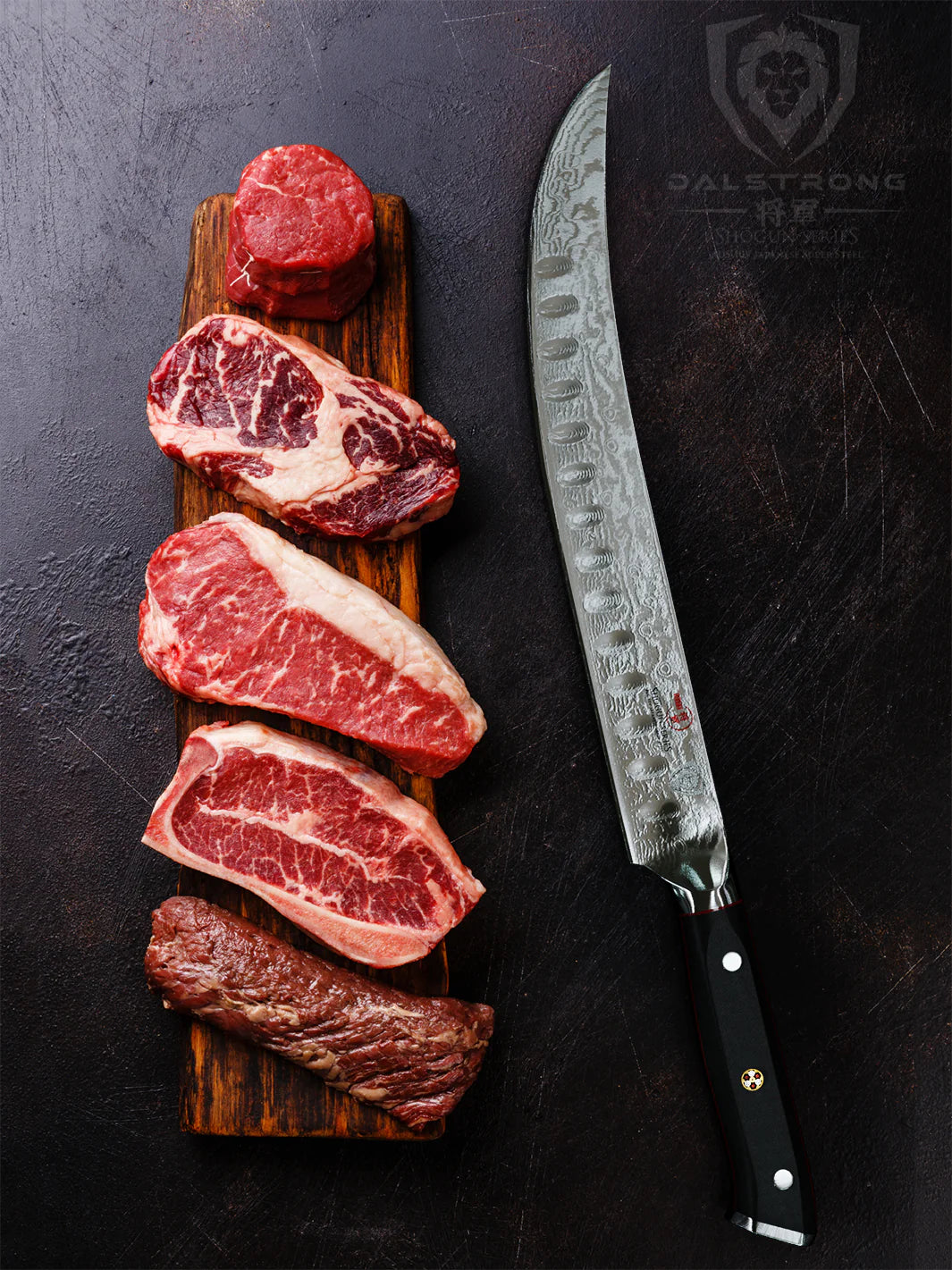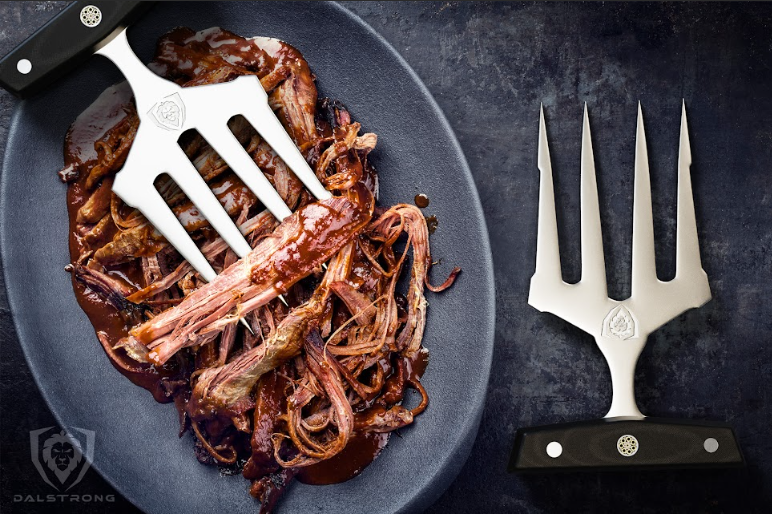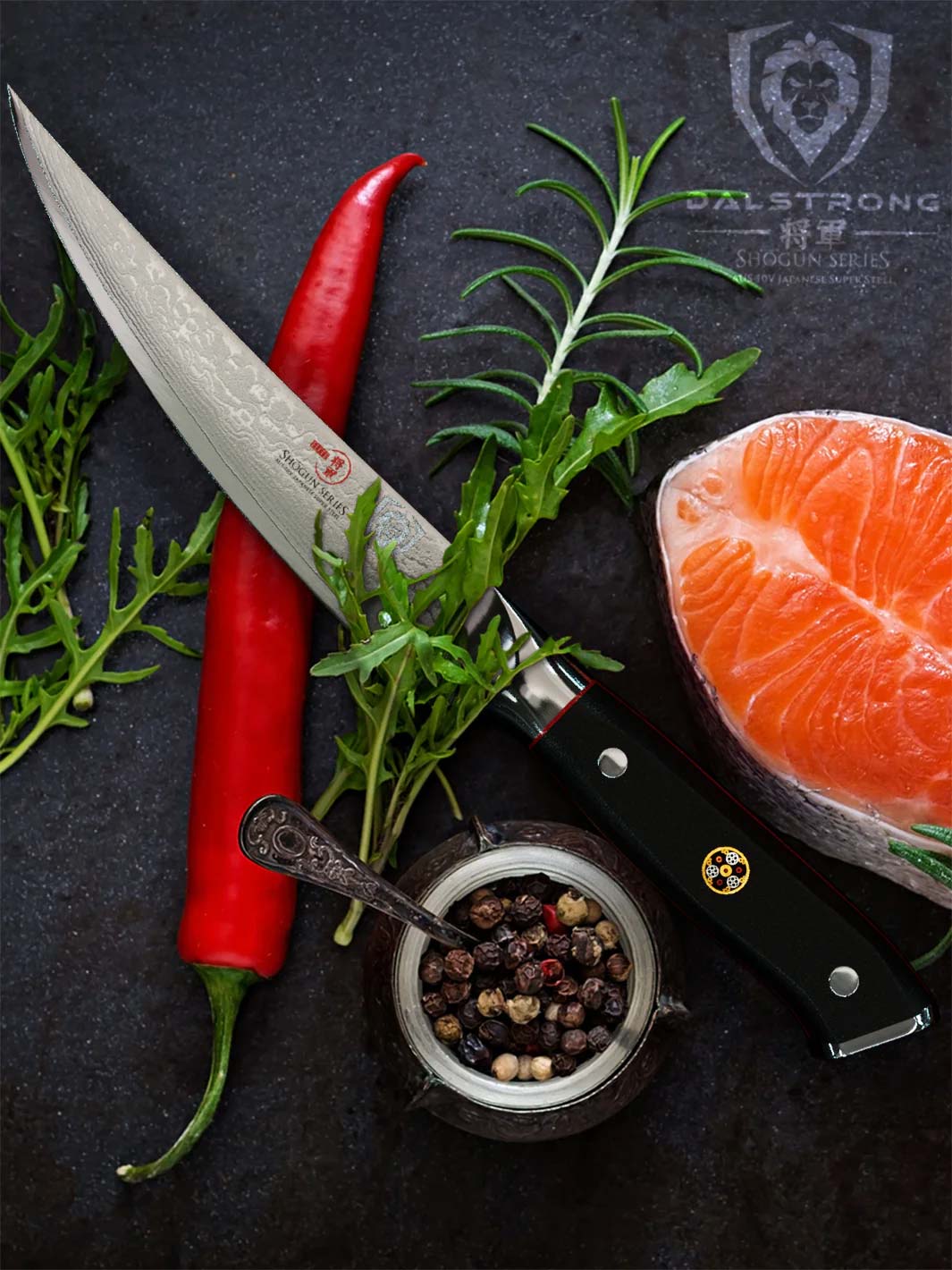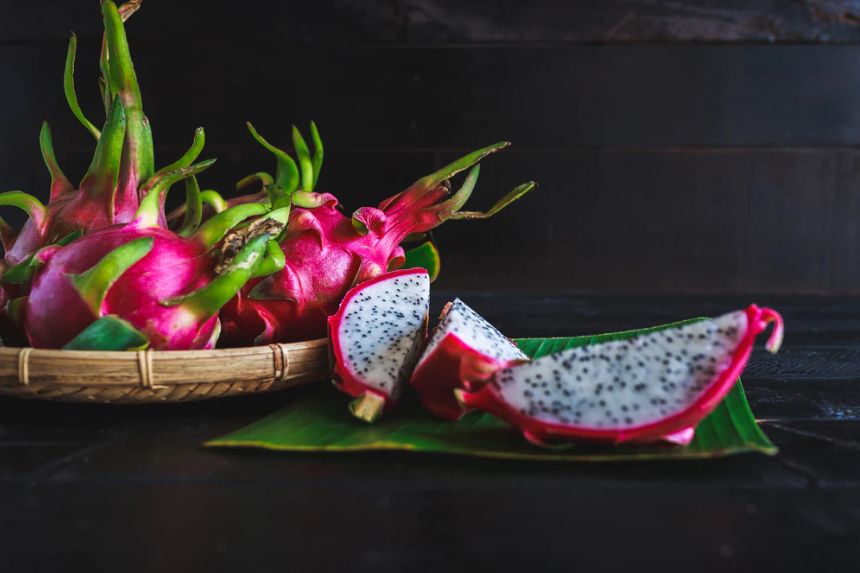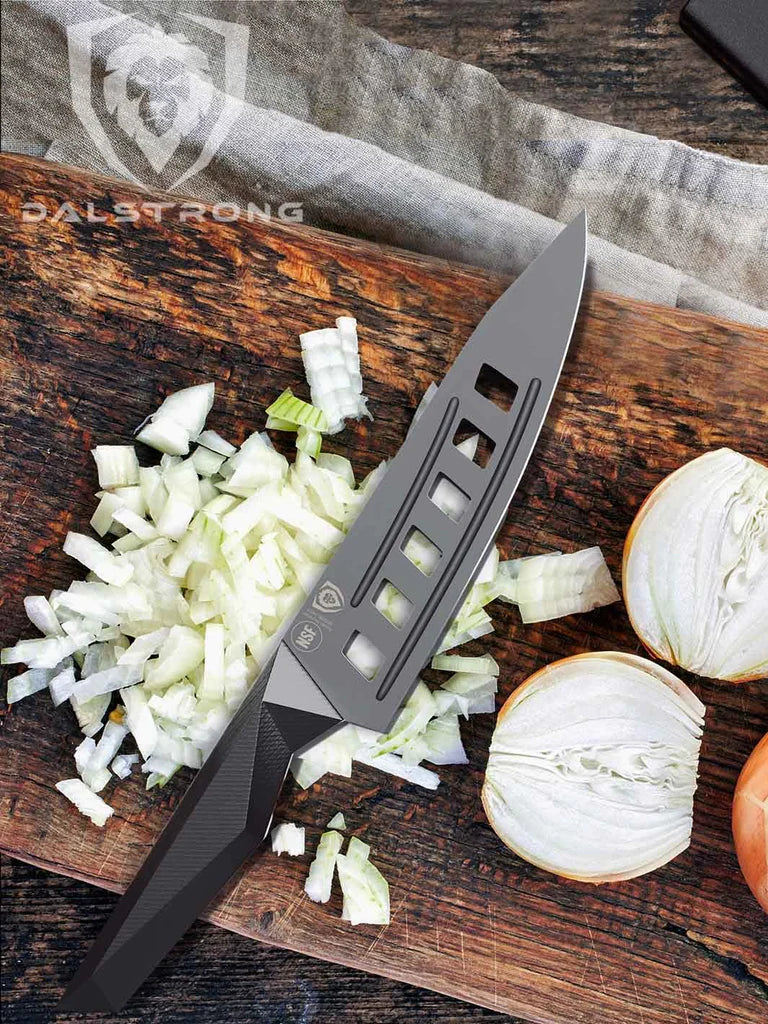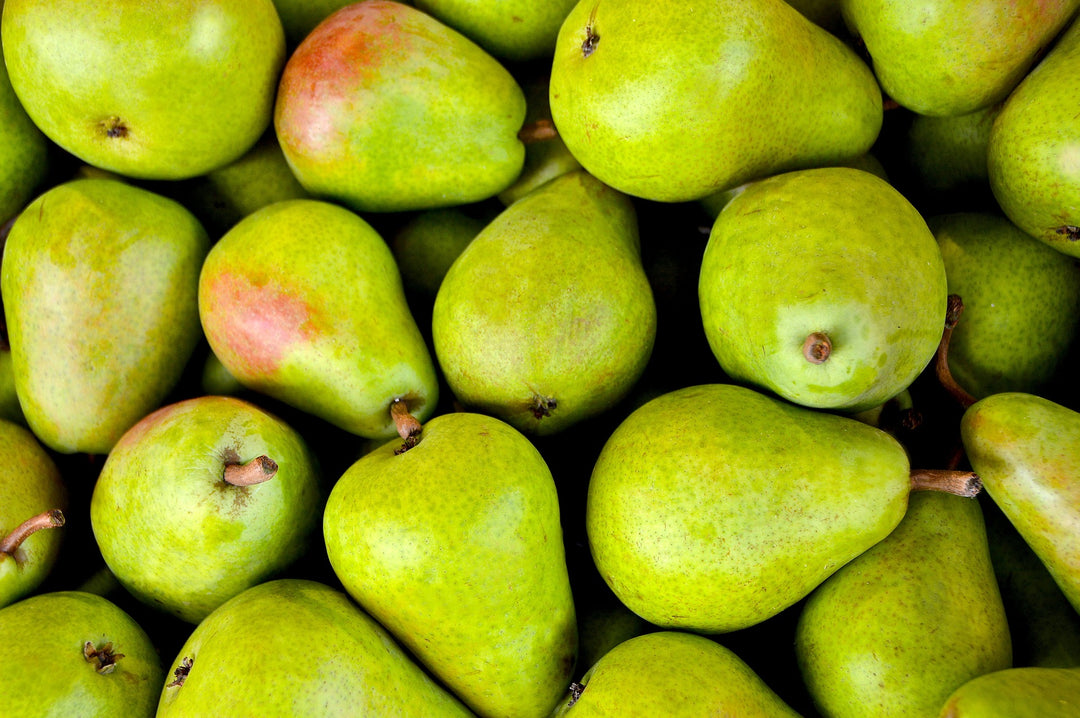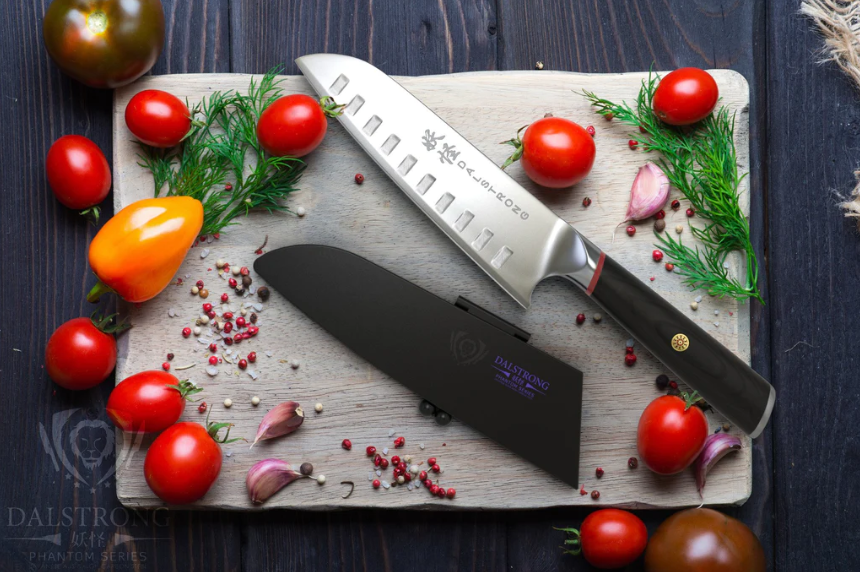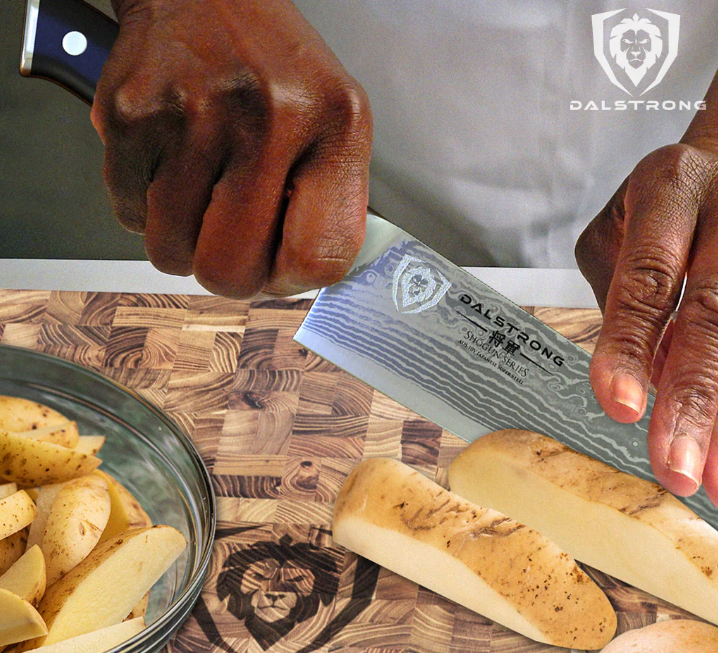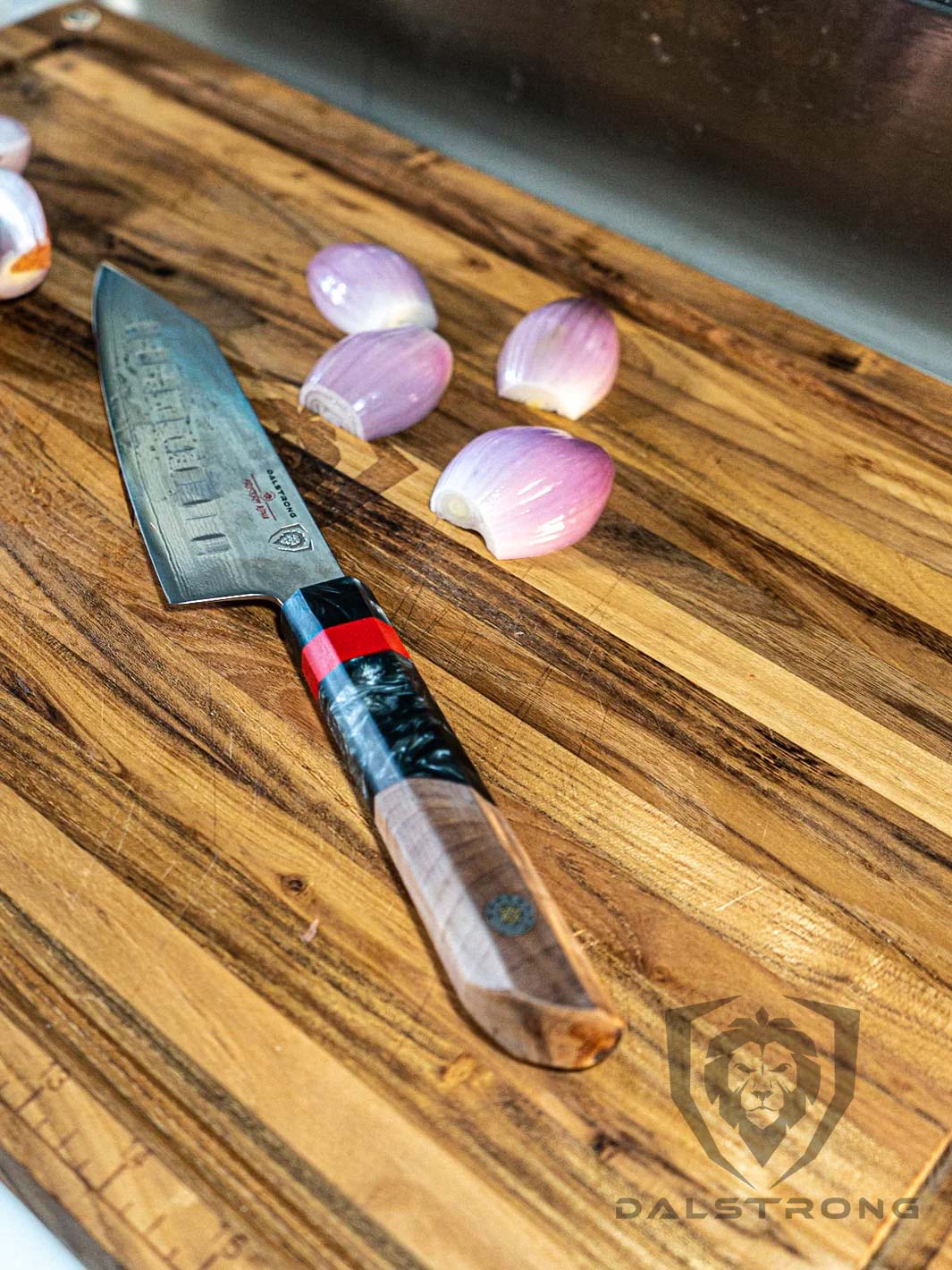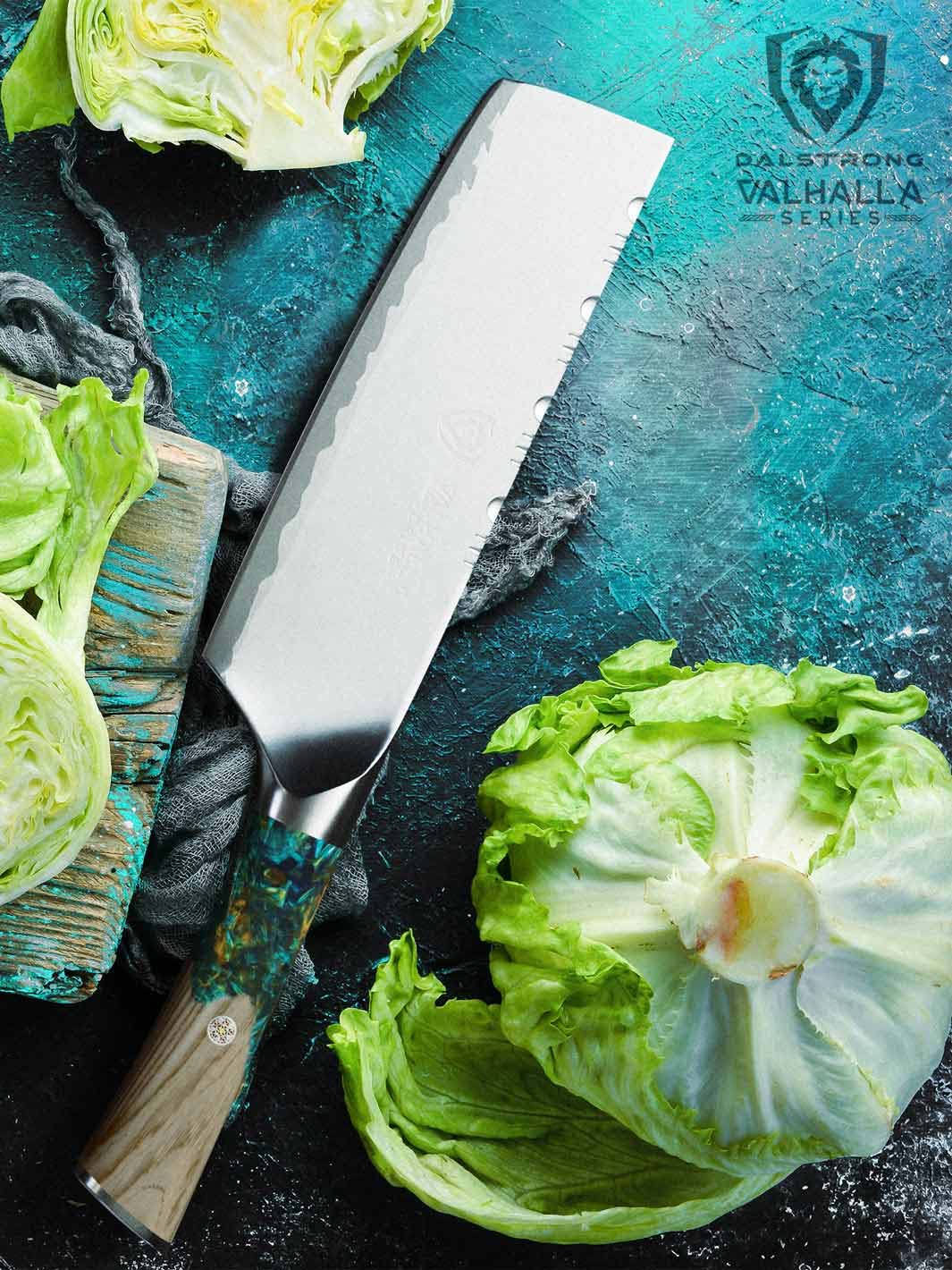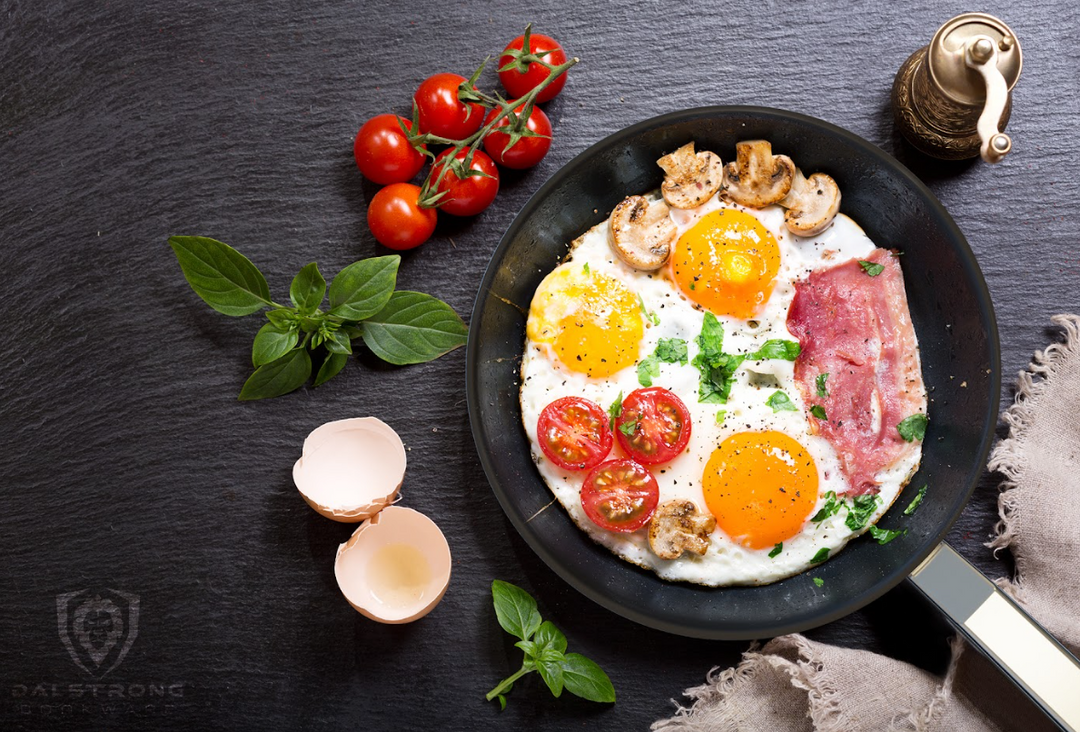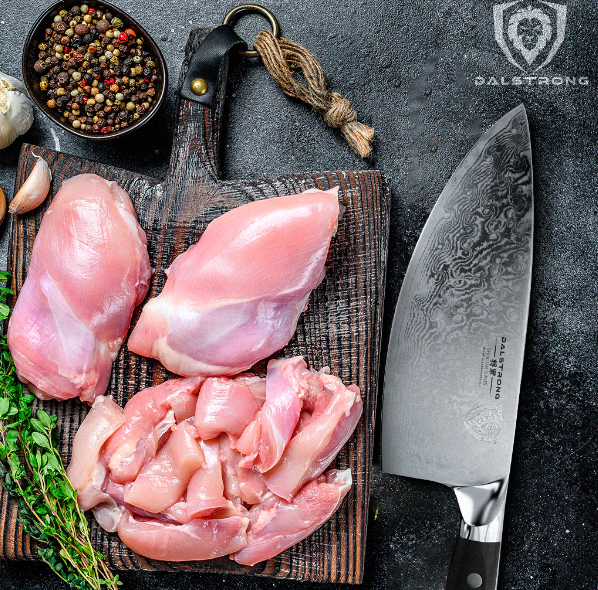How Long to Cook Burgers on the Grill
 Dalstrong Gladiator Series 8" Spatula Knife Hybrid Utensil
Dalstrong Gladiator Series 8" Spatula Knife Hybrid Utensil
How Long to Cook Burgers on the Grill
- Assemble all the burger essentials ahead of time.
- Season generously and prepare your toppings.
- Form the patties and sear with high heat on the grill.
- Flip your patties, toast your burger buns, and add the cheese.
- Keep an eye on the temperature and when it's cooked, let the burger rest.
A grill is a classic method for cooking hamburgers, but how long should you do it and what steps do you need to take to ensure succulent success? Let's dive into it.
1. How To Choose The Best Burger Meat
Everyone knows your burger is only as good as the meat you use. Choosing the best burger meat is an essential first step towards achieving that perfect, grilled burger masterpiece. Whether you are grilling beef burgers, turkey burgers, or even chicken burgers, your selection of meat will influence not only the flavor, but also the texture and juiciness of your final product.
Classics vs. variations
Now, if you're a traditionalist and enjoy the classic beef burger, ground chuck reigns supreme. This specific cut of meat is often considered the favorite burger meat among grill aficionados. Why, you ask? Ground chuck comes with an ideal fat content, promising to deliver that juicy, flavorful burger that has become an emblem of backyard barbecues and summer cookouts.
However, not all of us are in the mood for a hearty beef burger every time. For those seeking a leaner yet still flavorful option, lean ground beef, turkey, or chicken are excellent alternatives. These types of meat offer a lower fat content without compromising the taste or texture.
In the end, the choice of meat for your burgers boils down to personal preference. But with the right selection, seasoning, and cooking method, you're on your way to becoming the burger grill master at your next backyard barbecue.
2. How Long To Cook Burgers On The Grill
 Dalstrong Gladiator Series 8" Spatula Knife Hybrid Utensil
Dalstrong Gladiator Series 8" Spatula Knife Hybrid Utensil
If there's one critical component to preparing the ultimate grilled burger, it's mastering the grilling times. Overcook your burgers, and you end up with something that resembles the texture of paper towels; undercook, and you won't give the fat the time to properly render.
To prevent any grilling mishaps, you'll want to be aware of a generally accepted rule for cooking times: If you're after a medium-rare burger, aim for approximately 5 minutes per side under medium-high heat. This guideline might vary slightly depending on your grill and the thickness of your patties, but it's a solid starting point.
Different types of grills
Of course, grilling isn't an exact science and different grills can yield different results. You can certainly grill hamburgers on both charcoal and gas grills. Each type of grill features one-of-a-kind benefits and imparts a distinct flavor profile to your burger. Gas grills provide more control over the grill temperature, making it easier to reach and maintain the desired level of doneness. Charcoal grills, on the other hand, provide that authentic, smoky flavor that's hard to replicate with gas.
However, to ensure that your burgers are cooked just the way you like them, there's one tool you can't do without - a meat thermometer. Whether you're using a Thermopro digital or any digital meat thermometer, it's crucial to check the internal temperature of your burgers. This isn't just a tip for safety (although that is paramount); it's also about achieving your preferred level of doneness.
Doneness temperatures
Whether you prefer your burgers rare, medium-rare, or well-done, the internal temperature is key. Use a high-quality digital meat thermometer to check if your burgers have reached the desired level of doneness. Here's a handy guide:
- Rare: 120°F to 125°F
- Medium rare: 130°F to 135°F
- Medium: 140°F to 145°F
- Medium well: 150°F to 155°F
- Well done: 160°F and above
For instance, a medium-rare burger should register an internal temperature of 130-135 degrees Fahrenheit, while a well-done burger should be 160 degrees Fahrenheit or above. Remember, though, burgers continue to cook for a few minutes after they're removed from the grill, so you might want to take them off just shy of your target temperature to prevent overcooking.
When it comes to grilling, timing is crucial, but with a good understanding of the grill temperature, the right tools (like a reliable meat thermometer), and a little practice, you'll soon be grilling up burgers to perfection every time. Whether you're working with gas grills or charcoal grills, these tips will help ensure that every burger you grill is a hit at your backyard barbecue.
3. How To Cook Burgers On The Grill

Alright, now it's time to put our grilling tips into practice and prepare our favorite burger – the classic burger.
Grilling requires some tools of the trade, so make sure you have your grill, a trusty grill tool for flipping those beef patties, and a reliable meat thermometer at the ready. Grill cleaners like a good bbq grill cleaner are also handy to keep your grill grate in top shape, before and after the grilling extravaganza.
Next, preheat your grill. You'll want to cook burgers on direct heat, whether you're using gas or charcoal grills.
- Assemble all the burger essentials ahead of time. For the beef patties, we're using a champion of burger meats: ground chuck. Known for its fat content, using ground chuck guarantees a nice, juicy burger.
- Season generously. This isn't just a burger cook; it's a full-blown flavor adventure, so be sure to season your burger meats generously with your favorite burger seasoning. This could be as simple as kosher salt and freshly ground black pepper, or a blend that includes garlic powder - a classic flavor enhancer.
- Prepare your toppings. In terms of burger toppings, you can use anything you want. Crisp lettuce, juicy tomatoes, tangy pickles, caramelized onions, or even some fiery jalapenos for those who like it hot – it's all fair game. If you've got some nice crispy bacon for a bacon cheeseburger, that's even better. And yes, cheese is a must-have for a classic burger: Whether it's sharp cheddar, creamy mozzarella, or smoky gouda, it adds a layer of richness that's hard to beat.
- Form the patties. Form your seasoned burger into patties, remembering the indentation in the center of the patty. Try to resist the urge to make them too thick or thin.
- Onto the grill they go. The moment of truth is upon us - it's time to cook burgers on the grill. Whether you're using gas grills or charcoal grills, keep an eye on the grill temperature.
- Sear with high heat. High heat is perfect for searing the outside of your patties, but you'll want to finish cooking them over medium heat to ensure they're cooked through without being overdone.
- Flip your burgers. Halfway through your estimated cooking times, flip the burgers. Use a grill tool to avoid piercing the beef patties. Piercing the patties can release the juices, and you want those in your burger, not the fire. Also, it's the perfect time to toast your burger buns or hamburger buns for that perfect toasted bun feel.
- Add the cheese. If you're adding cheese (and let's face it, who isn't?), add it a minute or two before your burger is finished cooking to allow it to melt.
- Keep an eye on the temperature. This is where your meat thermometer comes in. Whether it's a digital meat thermometer or a classic analog one, it's a must-have tool for a successful burger cook. Probe the center of the patty, and refer to your trusted guide for grilled burger temperatures to achieve your desired level of doneness.
- Let them rest. With your burgers grilled to the desired level, take them off the grill and let them rest for a few minutes total before serving. This lets the juices redistribute throughout the burger, making it even more delicious.
4. Burger Alternatives and Variations
Can't grill outside? No problem. You can grill the perfect burger on an air fryer or even cook it sous vide if you prefer. And if you'd like a twist on the traditional burger, why not try a turkey burger or a smash burger?
The turkey burger, unlike your regular beef burgers, offers a leaner option. Just like your beef patties, turkey burgers can also be jazzed up with the right seasoning and toppings.Using a high-quality thermometer to check the internal temperature is particularly important here, as poultry must be cooked to much higher internal temperature than beef.
And if you prefer a vegetarian option, black bean burgers are becoming a popular choice. Seasoned well and grilled, they can provide a tasty alternative to meat-based burgers.
5. Dalstrong Products You Will Need
1. Dalstrong Gladiator Series 8" Spatula Knife Hybrid Utensil
The Dalstrong Spatula Knife Hybrid Utensil is an overall great tool for grilling, combining a spatula's versatility with a knife's precision. Crafted from high-carbon German steel, the blade is sharp, resilient, and perfect for slicing, mincing, and serving. The handle, made of military-grade G10, offers durability and comfort. Its full tang and triple-riveted design ensure robustness, while the ergonomic shape provides optimal maneuverability. Easy to maintain, this tool is resistant to stains, heat, cold, and moisture.
PROS:
- Multi-functional: combines knife and spatula.
- High-carbon German steel blade ensures durability and sharpness.
- Low maintenance, with resistance to stains, heat, cold, and moisture.
- Ergonomic handle design for comfortable use and excellent control.
CONS:
- Not as specialized as individual knives or spatulas.
- Its unique design may require an adjustment period.
2. Dalstrong Oberon Series 9" Frying Pan & Skillet
Can't make your burgers outside? No problem. Embrace indoor burger cooking with Dalstrong's Oberon Series Frying Pan. This frying pan is constructed from a 3-ply Aluminum core that delivers impeccable heat conductivity. Its heavy-gauge construction ensures consistent cooking results without warping, perfect for a juicy burger sear. Compatible with all stovetops and safe for oven use up to 500 degrees F, it's also dishwasher, freezer, and refrigerator safe.
PROS:
- Superior Eterna® non-stick coating lasts longer than other brands.
- Impressive heat conductivity for even cooking.
- Compatible with all stovetops and oven-safe up to 500 degrees F.
- Eco-friendly, PFOA and APEO free, safe for everyday use
CONS:
- Might require careful maintenance due to its non-stick coating.
- The unique 3-ply design might require a learning curve for temperature adjustments.
3. Dalstrong Lionswood Colossal Teak Cutting Board
Unleash your burger-making prowess with the Dalstrong Lionswood Colossal Teak Cutting Board. This sustainably-sourced tropical Teak board is your perfect companion for all chopping and slicing tasks, including forming those perfect burger patties. Featuring a slip-resistant surface that absorbs impact, this board is designed to keep your Dalstrong knives sharp for longer. It is hand-crafted from end-grain wood, known for its resistance to water, bacteria, and staining, making it ideal for any cooking environment.
PROS:
- Made from durable, bacteria-resistant Teak.
- End-grain construction prevents gouging and keeps knives sharp.
- Steel handles and cut-out for a side plate enhance utility.
- Doubles as a serving board for a beautiful presentation.
CONS:
- Its large size might not fit in some kitchen spaces; for a smaller version try this Lionswood teak cutting board.
- This guy is pretty big, and its weight might make it challenging to move.
4. Dalstrong Infinity Series Fibre Cutting Board - Medium Size
The Dalstrong Infinity Series Fibre Cutting Board is an excellent choice for preparing burger patties or any chopping and slicing tasks. Crafted from premium eco-friendly wood-fiber, this cutting board offers a practical upgrade from poly, glass, and wooden boards. Not only does its scorable surface protect your sharp blades, but it also provides a sophisticated touch to your kitchen.
PROS:
- Made from durable, eco-friendly wood-fiber composite.
- Medium size makes it suitable for most kitchen spaces.
- Non-slip silicone feet and G10 handle add stability and ease of use.
- Dishwasher-safe and mold-resistant for easy cleaning and maintenance.
CONS:
- The scorable surface might show knife marks over time.
- Not as large as the Lionswood Colossal Teak Cutting Board, making it less suitable for large food prep tasks.
5. Dalstrong Sous Team Apron - Heavy-Duty Waxed Canvas
What's a grillmaster without an awesome apron? The Dalstrong Heavy Duty Waxed Canvas Sous Team Apron is the perfect accessory for making burgers on the grill. This professional chef's kitchen apron is built to outlast the heat, making it perfect for your barbecue needs. Crafted from extra strength waxed canvas, this apron is waterproof, dirt-resistant, and built to withstand the demands of any kitchen or grill setting.
PROS:
- Durable, waterproof, and dirt-resistant waxed canvas material.
- Adjustable genuine-leather cross back harness for comfort and reduced neck strain.
- Ample storage options with several pockets and loops.
- Custom molded brass plate with the iconic Dalstrong lion insignia adds a stylish touch.
CONS:
- While it's built with durability in mind, its rugged style may not appeal to everyone.
- Some grillmasters may prefer aprons without cross back harnesses.
In addition to these, you should consider procuring grill tools such as a grill cleaner, and if you are looking for freshly ground meat, consider a meat grinder.
6. Frequently Asked Questions
Can I grill other types of burgers?
If you're looking for a lighter option, a turkey burger can be a great choice. Be careful, though. Turkey can dry out easily, so keep an eye on the internal temperature. You need an internal temp of 165°F.
What about sous vide?
Sous vide can be a fantastic method for cooking burgers, especially if you want a perfectly cooked burger with edge-to-edge doneness.
Is there a way to keep the patties from sticking to the grill?
You need to make sure your grill grates are clean and well-oiled. Using a paper towel wet with vegetable oil and brushed over the grates will do the trick. Also, try to only flip your patties once and avoid moving them around too much.
Should I season my burger before or after grilling?
Seasoning your formed patties with salt and freshly ground black pepper ahead of time and adding a final dash of seasoning after grilling can be a great way to enhance your burger's flavor.


















































































